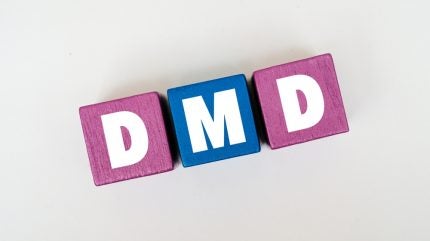
Capricor Therapeutics has publicised a statement addressing the US Food and Drug Administration’s (FDA) decision to reject its Duchenne muscular dystrophy (DMD) drug deramiocel.
This comes after the US regulator released 89 complete response letters (CRL) in a bid to “promote transparency” within the organisation, of which Capricor’s was one.

Discover B2B Marketing That Performs
Combine business intelligence and editorial excellence to reach engaged professionals across 36 leading media platforms.
The allogenic cardiosphere-based cell therapy was rejected by the FDA because the HOPE-2 (NCT05126758) and its open-label extension portion “failed to demonstrate efficacy for its prespecified primary … and secondary endpoints”.
However, Capricor rebuts this claim, noting that the primary endpoint data was analysed with a non-parametric test – meaning it needed transforming to reach a statistically significant p value of 0.014.
In the CRL, the FDA also stated that the study was designed to evaluate the efficacy of deramiocel on neuromuscular function rather than cardiomyopathy, resulting in HOPE-2 being “not an adequate and well-controlled study” for the intended indication.
Capricor also refutes this statement, claiming that despite the pivot away from a primary cardiac endpoint following FDA advice in early development meetings, the HOPE-2 trial still included a “detailed cardiac evaluation in DMD patients”.

US Tariffs are shifting - will you react or anticipate?
Don’t let policy changes catch you off guard. Stay proactive with real-time data and expert analysis.
By GlobalDataThe FDA’s claim of HOPE-2’s trial cardiac inadequacy will be unwelcome news for Capricor, which shifted deramiocel’s biologics licence application (BLA) focus to DMD-associated cardiomyopathy rather than its original focus of DMD. According to the biotech, this was due to encouragement from FDA reviewers during an informal cardiology meeting in August 2024.
In the CRL response letter, Capricor noted that the FDA’s call to reject deramiocel was “difficult to understand” and “unprecedented,” as the company was encouraged to file a BLA by the agency before its rejection.
Shifting regulatory tides
The FDA’s call to publish rejection CRLs signifies a notable shift in regulator policy – acting as a step up from the agency’s prior decision to publicise CRLs from approved drugs that had previously been rejected.
This change comes during a turbulent time for the FDA, with Center for Biologics Evaluation and Research’s (CBER) leader Vinay Prasad resigning and rejoining the agency’s division within the space of two weeks earlier this year.
It has also since transpired that Capricor may have been caught in the crossfire of tensions involving deramiocel’s BLA between Prasad and the Office of Therapeutics Products’ former director and deputy director, Nicole Verdun and Rachael Anatol. This is according to Capricor’s CEO Linda Marbán, who claims she was contacted by a STAT reporter after a “tip-off” from an agency insider.
Though Marbán stated that the company “respects the FDA’s process” in a 9 September statement, she stressed the importance of investor and patient access to both the CRL and Capricor’s response, which has now been publicised.
Despite the rather public setback, Capricor remains hopeful that deramiocel will eventually get the FDA go-ahead. The company is currently awaiting the minutes from a Type A meeting with the FDA review team, which will guide its next steps moving forward.
Topline data from the HOPE-3 trial will also debut in Q4 of 2025, which Marbán hopes will support its BLA resubmission.
However, it might be a bumpy road ahead for Capricor, as Levi & Korinsky are now filing a lawsuit against the company for alleged securities fraud related to deramiocel. The plaintiff claims that Capricor intentionally misled investors with “overwhelmingly positive statements relating to the four-year safety and efficacy data from the HOPE-2 trial”, as well as the company’s ability to obtain a BLA for the drug.





